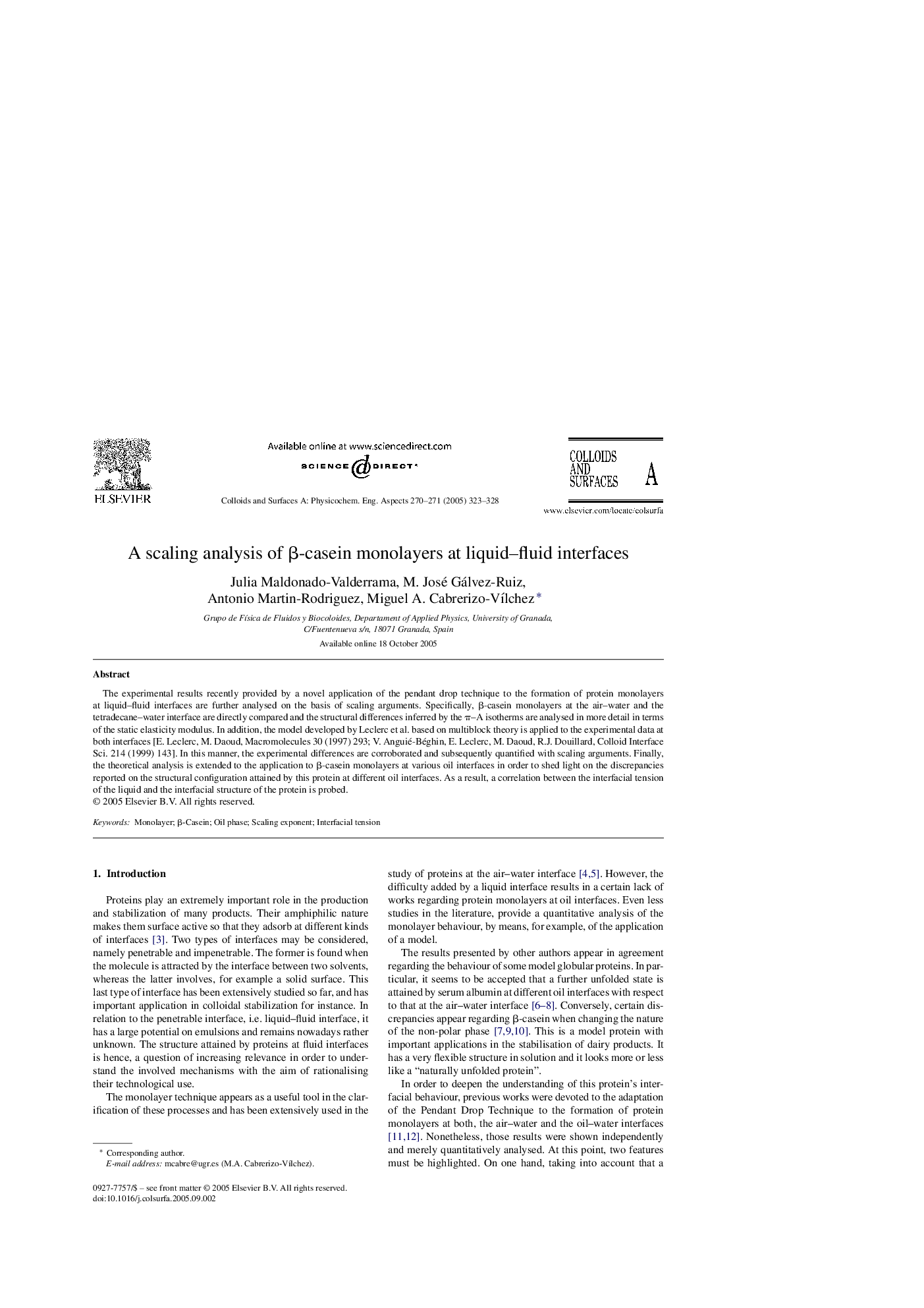| Article ID | Journal | Published Year | Pages | File Type |
|---|---|---|---|---|
| 9675560 | Colloids and Surfaces A: Physicochemical and Engineering Aspects | 2005 | 6 Pages |
Abstract
The experimental results recently provided by a novel application of the pendant drop technique to the formation of protein monolayers at liquid-fluid interfaces are further analysed on the basis of scaling arguments. Specifically, β-casein monolayers at the air-water and the tetradecane-water interface are directly compared and the structural differences inferred by the Ï-A isotherms are analysed in more detail in terms of the static elasticity modulus. In addition, the model developed by Leclerc et al. based on multiblock theory is applied to the experimental data at both interfaces [E. Leclerc, M. Daoud, Macromolecules 30 (1997) 293; V. Anguié-Béghin, E. Leclerc, M. Daoud, R.J. Douillard, Colloid Interface Sci. 214 (1999) 143]. In this manner, the experimental differences are corroborated and subsequently quantified with scaling arguments. Finally, the theoretical analysis is extended to the application to β-casein monolayers at various oil interfaces in order to shed light on the discrepancies reported on the structural configuration attained by this protein at different oil interfaces. As a result, a correlation between the interfacial tension of the liquid and the interfacial structure of the protein is probed.
Related Topics
Physical Sciences and Engineering
Chemical Engineering
Colloid and Surface Chemistry
Authors
Julia Maldonado-Valderrama, M. José Gálvez-Ruiz, Antonio Martin-Rodriguez, Miguel A. Cabrerizo-VÃlchez,
